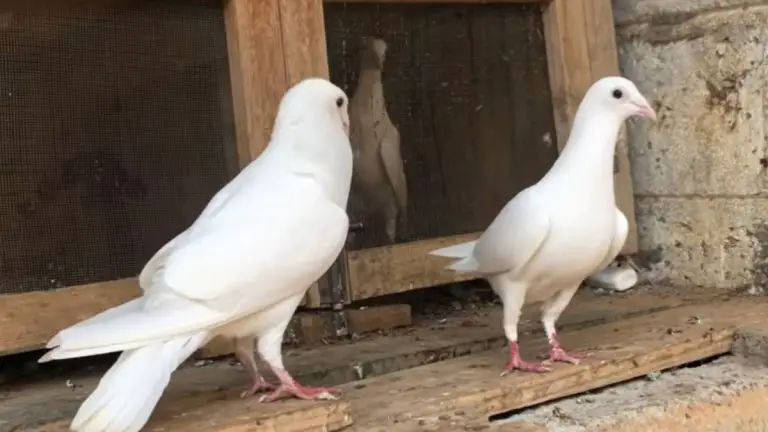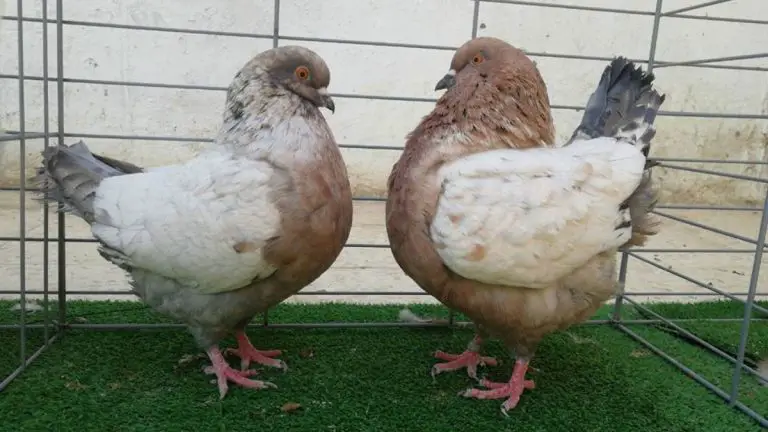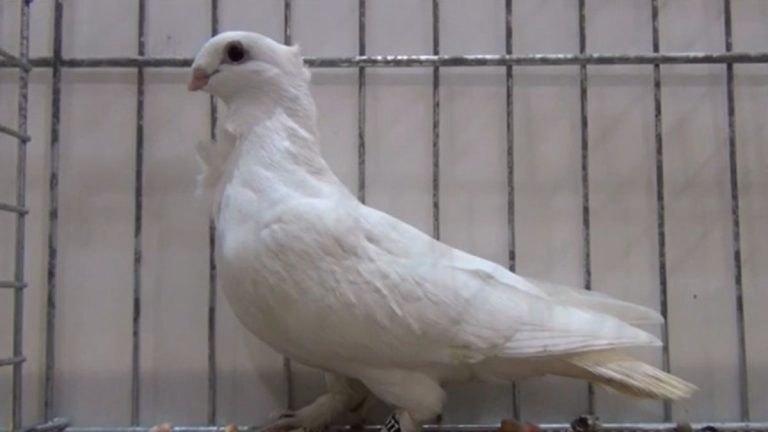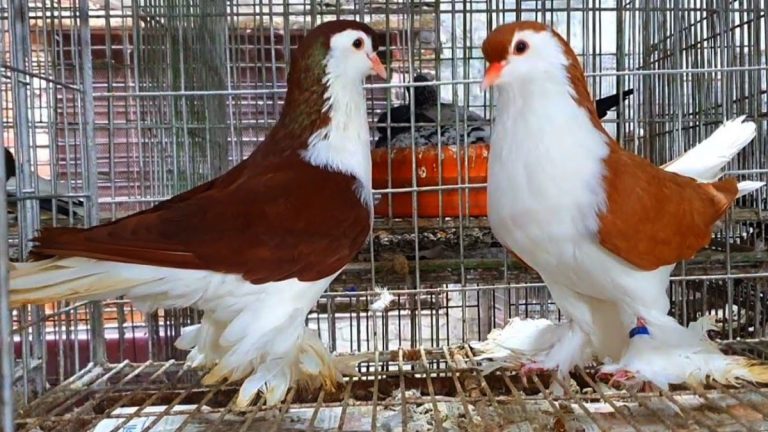Norwich Cropper Pigeon: Origin, Appearance, Behavior, Care, And More
The Norwich cropper pigeon is probably the most unusual breed you’ve ever seen. This is due to its crop which appears large, well-rounded, and puffed up at all times. The birds usually blow their crop to show off and are even reared as the clowns of pigeons world.
This distinctive feature makes it unique from other birds and makes it highly prized in pigeon exhibitions. Being friendly and docile, this pigeon is also loved by pigeon enthusiasts and makes a good pet.
The following article will take you through all the facts you need to know about Norwich cropper pigeons. You’ll learn its history and origin, physical characteristics, behavioral traits, diet, habitat, suitability as a pet, and breeding.
Norwich Cropper Pigeon Quick Facts:
| Scientific name | Columba livia domestica |
| Other names | Norwich kröpfer, Boulant de Norwich, Gozzuto in Norwich |
| Breed name | Norwich Cropper |
| Origin | Netherlands |
| Breed purpose | Exhibition, pets |
| Size | Medium |
| Weight | 400 to 450 grams |
| Flying ability | Good |
| Cost | $50 to $200 |
| Lifespan | 10 to 15 years |
Origin and history
The Norwich cropper pigeon originated from Norwich and Norfolk regions of the United Kingdom.
However, there’s no information on when these birds started being developed and are only referenced as ancient races, predicted to have begun development by around 16th century or earlier.
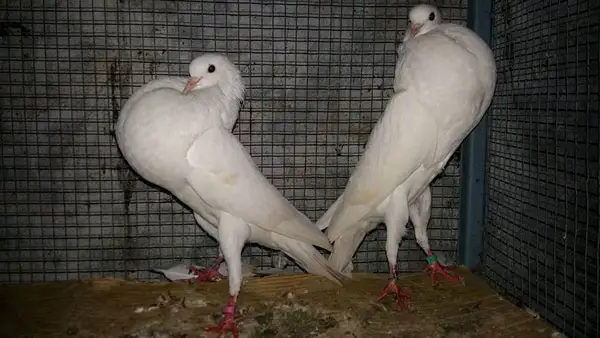
Norwich cropper is also believed to have been developed from a Dutch breed known as Uploper
Like many other breeds, this pigeon came out as a result of many years of selective breeding and is a descendant of the rock dove.
Norwich Cropper Pigeon Appearance
Norwich cropper is a medium-sized and slim bird whose beautiful body appearance makes it highly suited for shows and exhibitions.
The most distinctive feature of this pigeon is the cropper which appeared large and well-rounded. It’s capable of holding this cropper puffed up for prolonged periods of time.
It also has an erect stance such that it almost stands on its tiptoes. This makes it look as if it’s ready for a fight.
If you’re not familiar with this bird, you may even get easily intimidated by its chest thinking it’s about to attack you!
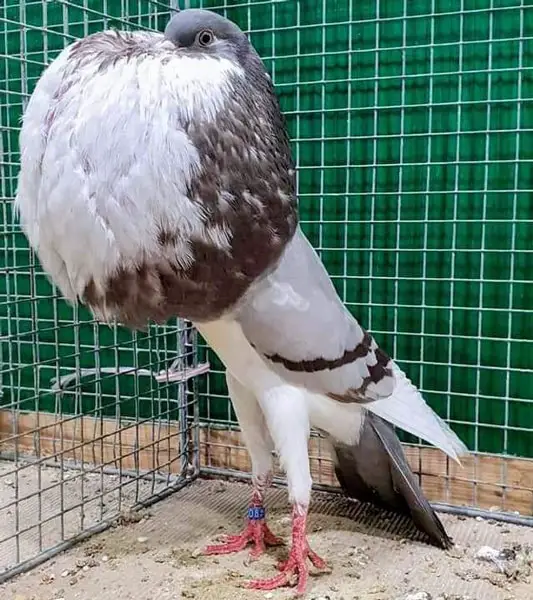
The bird lobes are usually large and round and stand out from its body at right angles.
Its head is smaller sized relative to its globe and body size. And its beak is of medium length, with a slim upper mandible appearing slightly curved at its top.
The eyes are pretty bold and feature a fine and tread-like eye cere. The typical eye color is red-orange, though the color may vary in white birds.
This pigeon’s medium-length wings are usually held close to its body. Its body feathered appears silky, hard, and tight. And are closely fitted to the body—especially around the vent and thigh areas.
Its tail is also closely fitting and slightly carried off the ground. And the legs are well set at the center of the bird’s body and are usually clean
Norwich copper comes in a variety of colors including black, blue, white, silver, red, and more.
The video below gives you a glimpse of the various colorations common in this type of pigeon.
Video:
Behavior
The Norwich cropper pigeon is a quite friendly breed. It has a naturally calm and gentle temperament which further makes it a great pet bird.
The bird shows no signs of aggression towards other birds of its own kind and can even be kept in pairs or small groups.
One behavioral trait unique to this bird is blowing up its crop and keeping it in this state for prolonged hours. The bird usually does this as a show-off and it seems like a lot of fun to it.
Note that these birds generally do this when they’re happy and healthy, though males may also do it when they’re mating.
Unfortunately, the cropper is likely to get injured or develop issues like a sour crop compared to birds that don’t usually raise their crop.
The bigger they blow it, the more likely the occurrence of injury or getting a sour crop.
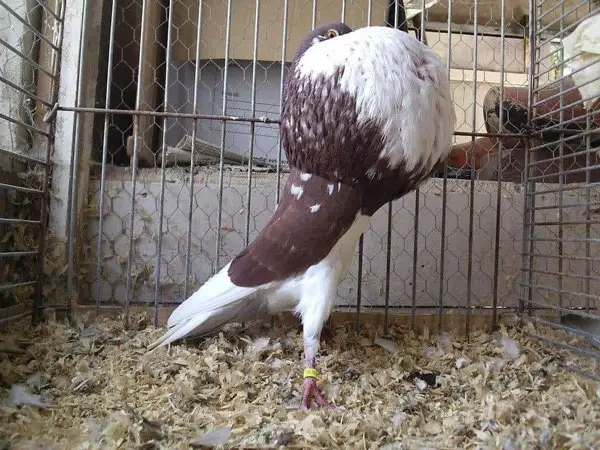
Diet
A balanced diet for this pigeon usually includes a variety of seeds and grains. Some of the best seeds you should consider mixing include barley, corn, millet, corn, wheat, etc.
Additionally, you can vary the bird’s diet by providing it with vegetables and fruits such as spinach, lettuce, dandelion greens, etc. These will help ensure it gets all the key nutrients.
Ensure your Norwich cropper pigeon has access to clean and fresh water for drinking every day.
Norwich cropper pigeons as pets
The Norwich cropper pigeon makes a good pet bird as it’s quite friendly and most owners agree that it’s fun to raise.
Before you get this bird, however, you should be able to meet its specific care requirements to ensure it stays a happy and healthy life.
The bird requires a comfortable living space that’s spacious to allow the birds to fly around and exercise. It should also be secure from predators. The enclosure should also be well-ventilated, safe from harsh elements, and kept clean at all times.
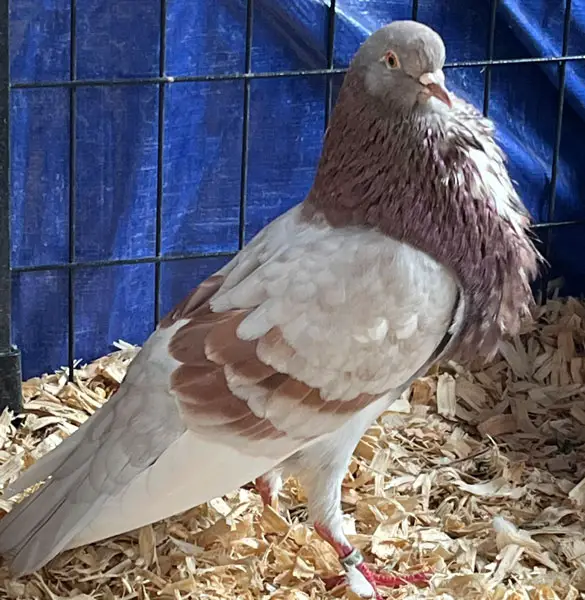
Provide this bird with a balanced diet that contains grains and seeds mix-up. You can simply get high-quality birdseed from pet stores or mix the seeds and grains on your own.
Vegetables and fruits are also good for a nutritious diet. Not to forget the bird requires a daily supply of clean and fresh water.
The bird is easy to tame and handle and spending time around it can help develop a bond with you. It might even become a good shoulder companion for you.
Probably the most important part about taking care of your pigeons is keeping an eye on them, and taking action immediately after you notice any signs of illness or change in behavior.
Downsides of Norwich cropper pigeons as pets
One thing that can make these birds hard to raise is the sour crop issue. However, knowing how to manage this issue can be helpful when raising these birds.
You simply need to put the bird upside and then try to gently squeeze out the feed and water to flush them out of the crop. (Source).
Since we said these birds are prone to injuries due to their blowing behavior, it’s also advisable to eliminate any sharp objects, e.g. sharp edges, nails, perches, etc., which may cause the injuries.
You should also keep a close eye on how the bird behaves—if it’s unable or unwilling to blow its crop, then that’s a sign that something is wrong with it.
Breeding
The breeding process in Norwich cropper pigeons is pretty much similar to that of other birds.
Besides, these birds are great breeders and are good at taking care of their young ones. They don’t need foster parents to help hatch their young ones or raise them.
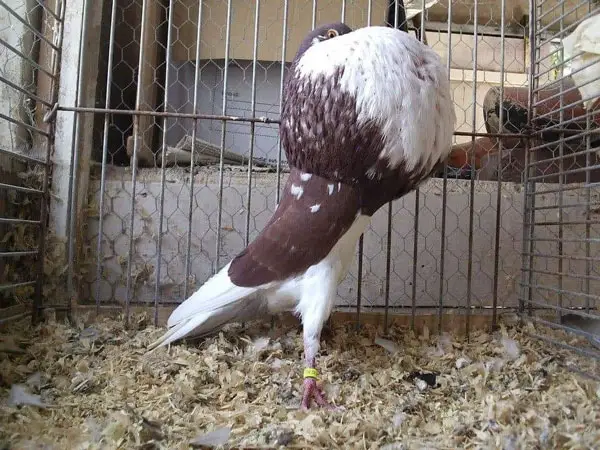
The female produces around 2 eggs per clutch and both parents take turns incubating them until they hatch into young ones.
Price
A Norwich cropper can cost anything from $50 to $200 or sometimes more.
The price variation is brought about by several factors including where you live, the breeder, the pedigree of the specific bird you’re buying, age, gender, etc.
As you can easily guess, high-quality birds with desirable exhibition traits are likely to cost more than pet-standard birds.
Also, if you live in an area where there’s high demand for this bird but a limited number of breeders, you may be forced to pay more.
When purchasing this pigeon breed, we advise you to find a reputable breeder who has a track record for producing healthy, quality birds.
Norwich Cropper Pigeon Lifespan
The lifespan of the Norwich cropper pigeons is around 10 years, though some birds can go up to 15 years.
The secret to a long life is taking good care of your bird pets by providing them with a balanced diet, and suitable living conditions, and taking the bird to an experienced vet for routine checkups to keep away various illnesses.
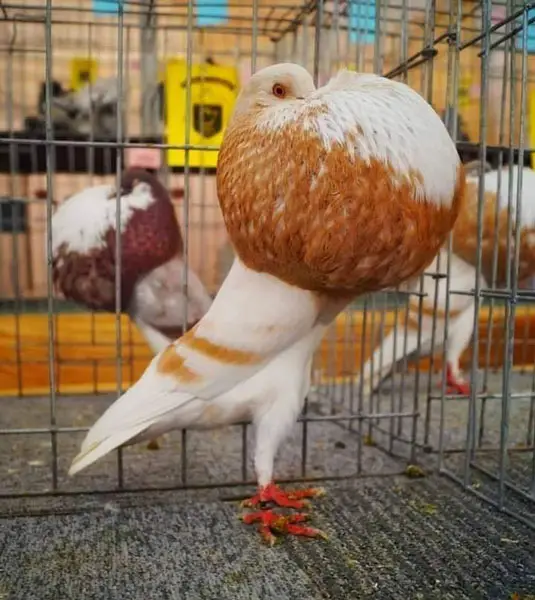
You should also pair up your bird or put them in small groups since they’re sociable birds.
And don’t forget to look for sudden changes in your bird’s behavior and take it to your vet for checkups. The vet can easily catch underlying health issues before they turn into more serious complications.
If you’re interested in learning more about different pigeon breeds, you might find our articles on Modena pigeons and Lucerne Gold Collar pigeons helpful. Our article on Modena pigeons provides an in-depth look at the breed’s unique features and provides guidance on how to raise and care for them. Meanwhile, our article on Lucerne Gold Collar pigeons explores the breed’s history, characteristics, and care, including tips on feeding and breeding. Don’t forget to also check out our article on Norwich Cropper pigeons for more information on this fascinating breed.Final Verdict
That’s all about the Norwich cropper pigeon. Its cropper and erect standing posture are the two most distinctive features that make this fancy pigeon stand out from other domesticated pigeon breeds. For this reason, this bird is mainly raised for exhibitions and ornamental purposes.
Its gentle and calm temperament makes it suitable for keeping as a pet. Plus, it’s friendly so it gets along well with other birds and even its owners. With proper care and attention, you’ll enjoy the company of this bird for years to come. Follow the care tips we’ve just discussed in the above guide to keeping your bird happy and healthy for extended periods.

